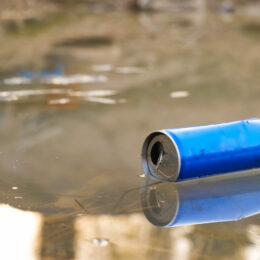Feds Invest Billions to Address Aluminum Mine Pollution

The federal government announced that it would be dolling out an unprecedented $6.4 billion to address the lasting effects of aluminum mining.
The clean-up will target the four states that are intersected by the Catawissa Creek: Pennsylvania, Virginia, West Virginia, and Maryland.
The creek, which stretches 42 miles, should be bouncing with trout and other wildlife, but instead, it’s lifeless. The animals and plants that would have populated the river were poisoned by the high-acidity water used in coal and aluminum mining decades ago.
One conservationist said the Catawissa is “one of prettiest screwed-up creeks east of the Mississippi.”
At least 7,346 miles of streams in Pennsylvania alone suffer from similar acidity issues as a result of the dirty water flowing from the mines. As another conservationist put it, “Oftentimes, these sites extend miles downstream and decimate everything in their path.”
Previously, the federal government set aside money to try to clean the drinking water, but it ignored the lasting effects of the aluminum pollution in rivers. After 45 years of advocacy, the federal government is finally putting some big money behind cleaning the creek to restore it as a wildlife habitat.
Today, very little aluminum is mined in the United States. Instead, that dirty process has been exported to other countries including Malaysia and Indonesia. But the detrimental effects of aluminum mining haven’t vanished.
Harvesting bauxite – the ore used to make aluminum – is still as dirty as ever.
Bauxite mining coats nearby communities in red dust which pollutes rivers, killing off vegetation and wildlife while destroying family farms. Bauxite mining has even prompted riots by farmers whose livelihoods have been destroyed because of the bauxite pollution.
Beyond destroying farms, bauxite pollution has been tied to serious illnesses including cancers and Alzheimer’s disease, all of which have been detailed in a report by Human Rights Watch.
If the decades-long aluminum clean-up process in the United States is any indication, it could take generations for the damage caused by aluminum production to subside in the regions where it is produced today.
Policymakers promoting aluminum alternatives to plastic and glass should be aware of the lasting consequences of aluminum production.
That’s one more reason–if you needed one–to make sure to recycle aluminum cans.





